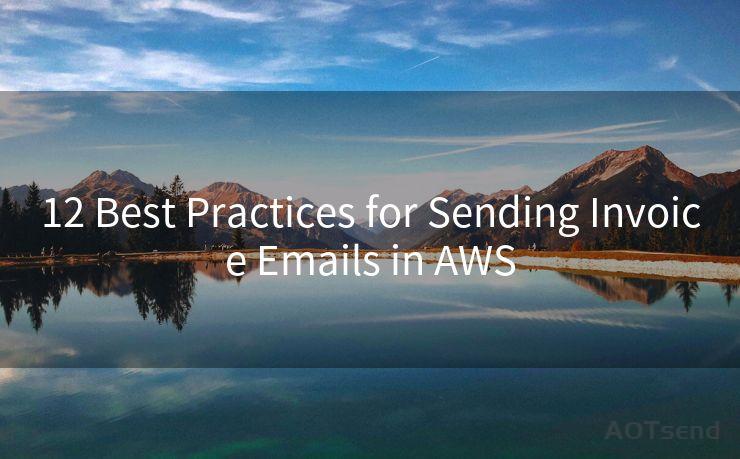12 Best Practices for Sending Invoice Emails in AWS




When it comes to sending invoice emails in AWS, there are several best practices that can help ensure your emails are delivered effectively and securely. Here are the top 12 tips to keep in mind:
1. Use Dedicated IP Addresses
Utilizing dedicated IP addresses for your invoice email sending can significantly improve deliverability. This is because shared IP addresses may be affected by the sending practices of other users, potentially harming your email reputation.
2. Warm Up Your IP Address
Before sending a large volume of emails, it's crucial to warm up your IP address. This involves gradually increasing the number of emails sent over time to establish a positive sending history and reputation with ISPs.
3. Maintain a Clean and Updated Email List

Regularly clean and update your email list to remove invalid or bounced email addresses. This helps maintain a healthy email list and improves deliverability rates.
4. Personalize Your Emails
Personalization is key to engaging recipients. Use merge tags to insert the recipient's name, company, or other relevant information into the email body and subject line.
5. Optimize Your Email Content
Ensure your email content is relevant, clear, and concise. Avoid using spammy words or phrases, and include a clear call to action.
6. Use a Professional Email Template
Invest in a professional email template that reflects your brand and provides a clean, user-friendly layout. This enhances readability and professionalism.
7. Test Your Emails
Always test your emails before sending them to your entire list. Check for rendering issues, broken links, and spam triggers.
8. Monitor Your Email Metrics
Regularly monitor key email metrics like open rates, click-through rates, and unsubscribe rates. This data can help you fine-tune your email strategy.
9. Handle Unsubscribes Gracefully
Provide an easy way for recipients to unsubscribe from your emails. Respecting their preferences helps maintain a positive brand image.
10. Implement DKIM and SPF
Use DomainKeys Identified Mail (DKIM) and Sender Policy Framework (SPF) to authenticate your emails and improve deliverability.
11. Comply With Anti-Spam Regulations
Ensure your emails comply with anti-spam regulations, such as the CAN-SPAM Act, to avoid legal issues.
12. Leverage AWS SES Features
When using Amazon Web Services (AWS) Simple Email Service (SES), take advantage of its advanced features like email sending analytics, dedicated IP pools, and reputation dashboard to optimize your email sending practices.
🔔🔔🔔
【AOTsend Email API】:AOTsend is a Managed Email Service for sending transactional emails. Support Email Types: reminders, authentication, confirmations, notifications, verification codes, invoices, password resets, account activations, billing statements, two-factor authentication (2FA), and one-time passwords (OTP) emails, etc. $0.28 per 1000 Emails. 99% Delivery, 98% Inbox Rate.
You might be interested in:
Why did we start the AOTsend project, Brand Story?
What is a Managed Email API, How it Works?
Best 25+ Email Marketing Platforms (Authority,Keywords&Traffic Comparison)
Best 24+ Email Marketing Service (Price, Pros&Cons Comparison)
Email APIs vs SMTP: How they Works, Any Difference?
By following these 12 best practices for sending invoice emails in AWS, you can significantly improve your email deliverability, engagement, and overall customer satisfaction. Remember to continually monitor and adjust your strategy based on performance metrics to ensure maximum effectiveness.




Scan the QR code to access on your mobile device.
Copyright notice: This article is published by AotSend. Reproduction requires attribution.
Article Link:https://www.mailwot.com/p3896.html



